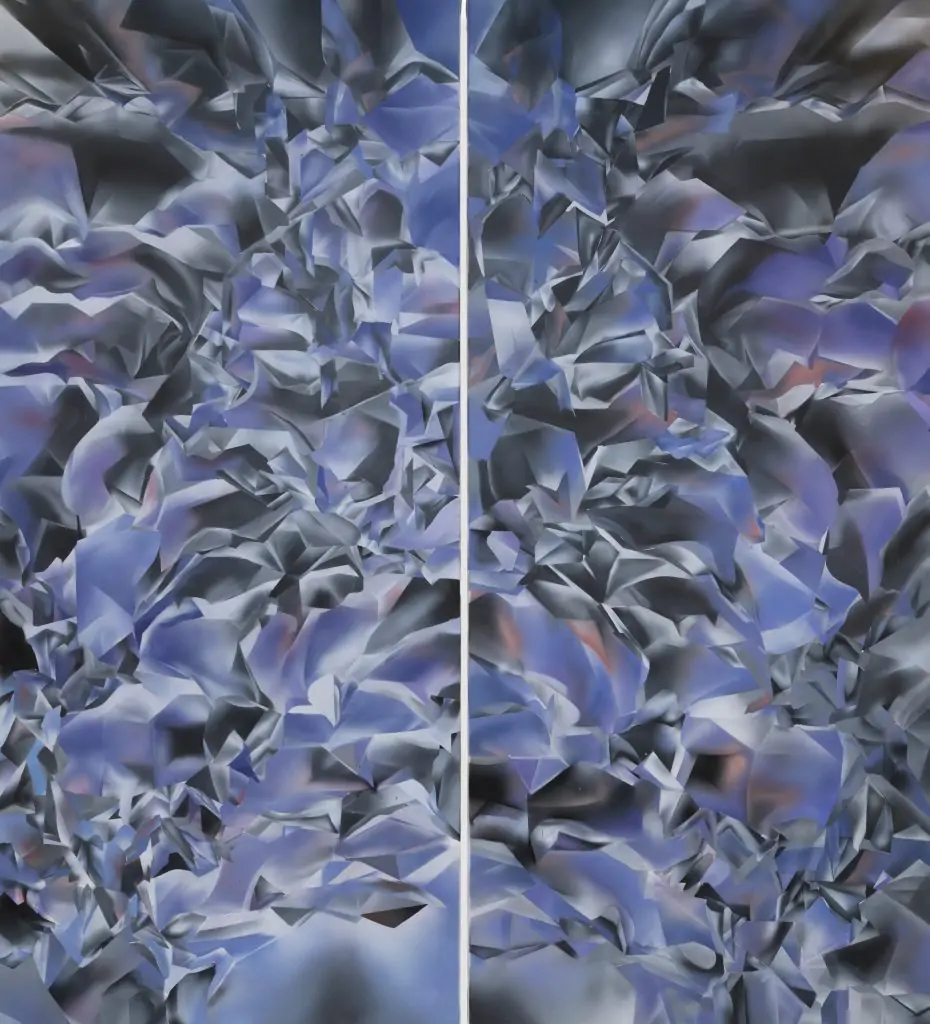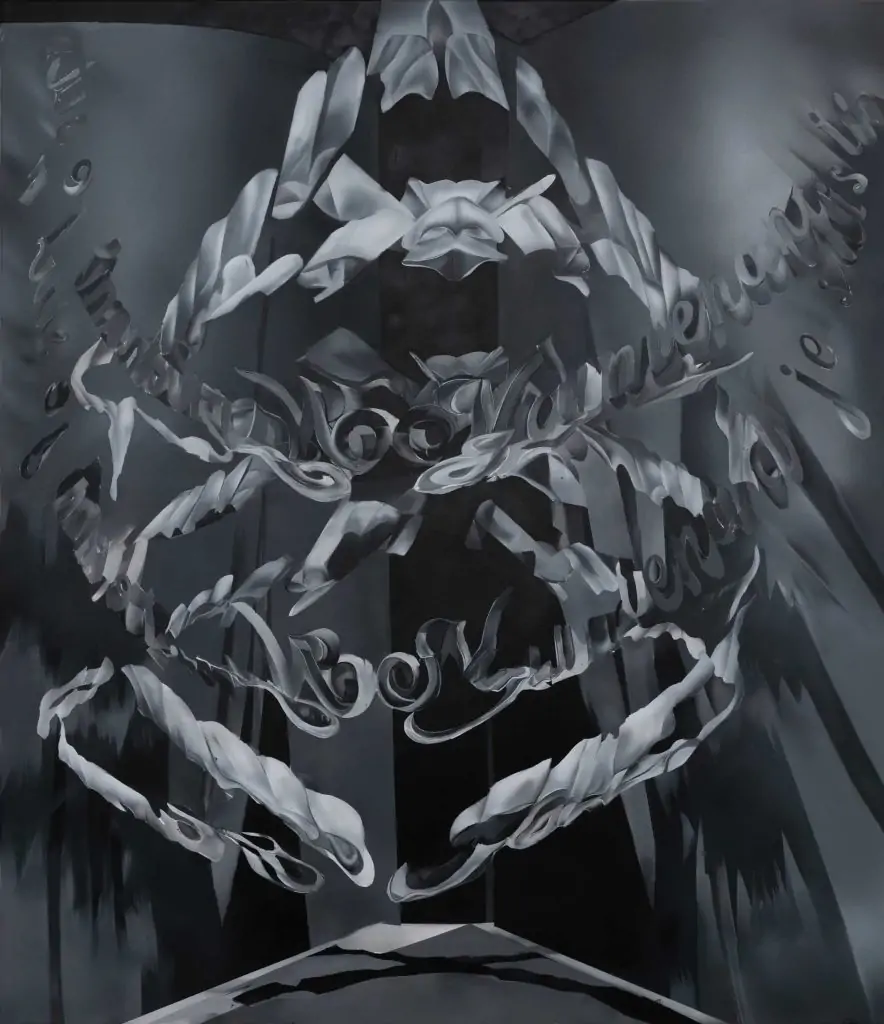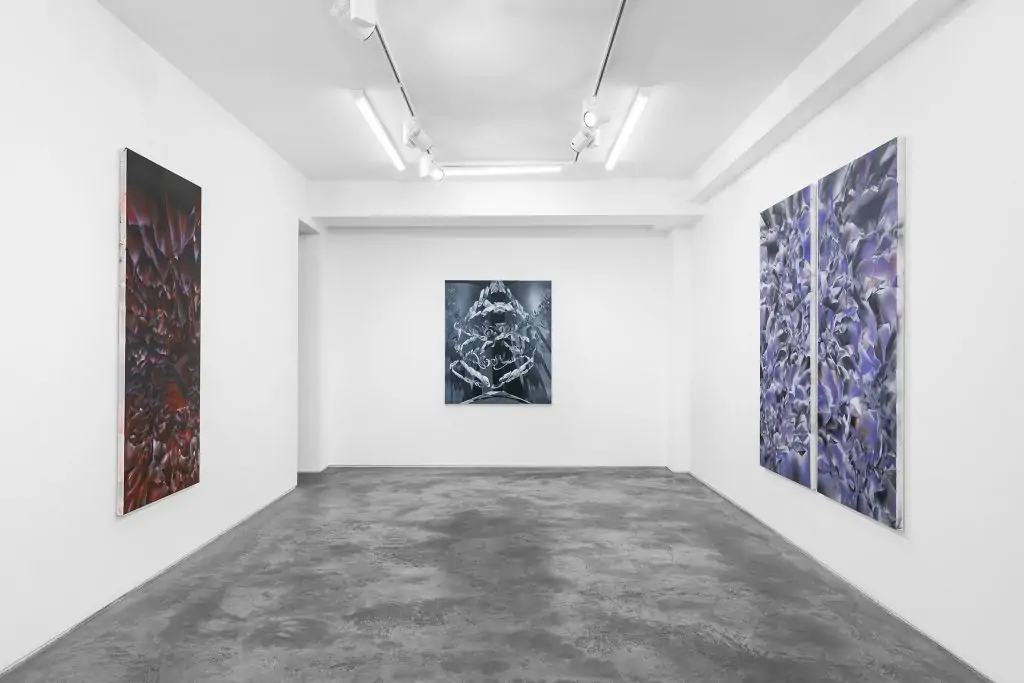BETHANY HADFIELD: BILLBOARDS AND TALISMANS
30 May, 2024 – 06 July 2024
HUXLEY-PARLOUR
3–5 Swallow Street
London
W1B 4DE
Huxley-Parlour are delighted to present Billboards and Talismans, British artist Bethany Hadfield’s first solo exhibition with the gallery. For this exhibition, opening in our Swallow Street gallery in May, Hadfield has created nine large-scale paintings that continue the artist’s exploration of the porous boundary between the digital and the physical.
Text as motif acts as a fixed position for this body of work; both the exhibition’s eponymous objects billboards and talismans – are characterised by a tension between the meaning and visual form of the text they contain. Hadfield considers the way motorway billboards are viewed in motion, how they act as speakers of desire, and the extent to which the visual qualities of their text – shape, colour, line – can take precedence over linguistic meaning in these transitory, fleeting glances.

Image courtesy of HUXLEY-PARLOUR
Similarly, ancient talismans (objects understood to have magical powers to protect, heal or even harm) were often inscribed with text or voces magicae that resembled recognisable language but remained ultimately illegible or nonsensical. In spite of their absence of a decipherable fixed meaning, these textual phrases and the objects they were carved onto were ascribed significant spiritual power. In Reflections on Double Glazing, Hadfield creates deceptive forms that resemble text, teetering on the edge of legibility, but recede into abstract forms at any attempt to read or comprehend fully.
This tension, between something which is legible but ultimately incomprehensible, mirrors Hadfield’s process of abstraction more generally; in their lack of entirely decipherable subject matter, all of Hadfield’s paintings deny a fixed or defined meaning.

Image courtesy of HUXLEY-PARLOUR
In their visual content, Hadfield’s paintings are simultaneously artificial and organic. This latest body of work is defined by the artist’s attempt to represent motifs associated with desire or longing, particularly the surface of the ocean. Much like Hadfield’s complex tessellated surfaces, when viewed in isolation the surface of the sea belies its own sense of scale; its amorphous form arises only as it reflects, shimmers, and ripples.
In some works, like Reflect, this relationship with water is made explicit; the blue surface of the painting directly resembles water, disrupted only by unnatural mirror-
like discs. Yet the continuous motion of rippled water, rising and falling with rhythmic swell, is integral to even Hadfield’s most abstract paintings. Each fractal form simultaneously concentrates the gaze and repels it, perpetually oscillating between the micro and the macro with an almost metronomic motion. Characterised by a tension between repetition and difference, Hadfield’s paintings call to mind the Deleuzian notion of an inherent contradiction in the counterpoint between part and whole – with ‘a single and the same Ocean for all the drops.
Hadfield’s paintings emerge through a complex translation from computer-based image to canvas. The artist uses an online open-source digital 3D rendering software to develop her subject matter. Hadfield uses the software in an intentionally unsophisticated way to create fractured surfaces made up of undulating, geometric forms. These forms are then translated onto canvas and rearticulated through the language of paint.
Hadfield’s image-making process represents a joint venture between artist and machine. She describes the pleasure that comes with her inability to ‘correctly’ render an image, each surface instead the product of mistakes, experiments and unexpected outcomes that are as much generated by the software as herself. Abstraction does not take place in Hadfield’s mind, but instead emerges through an externalised dialogue with the image-rendering software.

Image courtesy of HUXLEY-PARLOUR
Hadfield’s denial of a singular origin point, or traceable presence of an individual within her paintings, counters the Renaissance notion of discrete artistic genius – pervasive also in the history of abstract art, which has seen abstraction as a fundamental expression of an individual’s psyche.
Each painting instead records a collaboration, acting as an expression of rhizomatic interactions between animate and inanimate beings that suggest the wider possibilities of nonhuman agency – a collective machine and anti individual. Hadfield received a BA in painting from Wimbledon College of Art in 2016 before graduating from the Royal College of Art with an MA in 2022. Her work has been shown in several group exhibitions in the United Kingdom. Hadfield lives and works in London.
BETHANY HADFIELD: BILLBOARDS AND TALISMANS opens on the 30th of May, 2024 until the 6th of July 2024 at HUXLEY-PARLOUR
©2024 HUXLEY-PARLOUR





